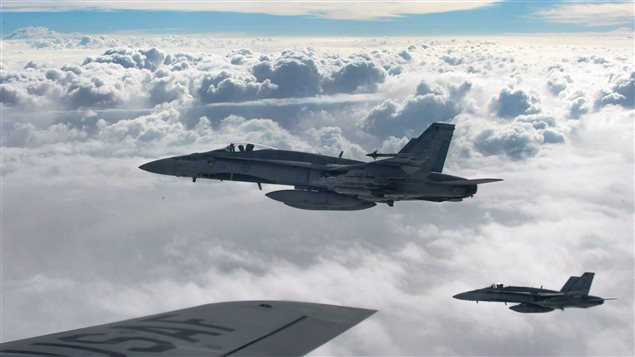While federal politicians in Ottawa squabble over Canada’s role in the fight against ISIS militants, Canadian fighter jets in the region have been busy pounding the group’s positions in Syria and Iraq.
Just in the last week of January, Canadian CF-18 Hornet fighter jets carried out four strikes, targeting ISIS fighters and positions in Fallujah and Ramadi in western Iraq, and an Improvised Explosive Device (IED) production factory east of the ancient city of Palmyra, in Syria, according to the National Defence website tracking Canadian operations.
The strike near Palmyra was only the fifth time Canadian jets had struck ISIS targets in Syria since the Canadian parliament authorised the military to expand its air campaign to Syria last March.
Chris Woods, head of Airwars, a UK-based group of investigative journalists and volunteers that tracks the number of civilian casualties in Syria and Iraq, said he was not aware of any reports of civilian casualties caused by the Canadian airstrikes.
Beginning from October 2014 when the first of six Canadian fighter jets were deployed in the region, the Canadian CF-18s have conducted 1338 sorties, resulting in 218 airstrikes.
The newly elected government of Prime Minister Justin Trudeau has vowed to pull the Canadian fighter jets from the region, promising instead to concentrate Canada’s limited military resources on training Iraqi security forces and Kurdish peshmerga forces in northern Iraq to take on ISIS fighters on the ground.
The move by the Liberal government to withdraw the fighter jets has drawn fire from the opposition Conservatives who authorised the mission in the Middle East when they were in power.
The current mandate of Canadian forces in the region expires in March.
New mission
However, it’s not clear yet what form the new training mission will take. There are already 69 elite Canadian special forces soldiers training Kurdish forces in northern Iraq.
It’s also not clear whether Canada will maintain its other air assets in the area. In addition to the six fighter jets Canada has also deployed one CC-150T Polaris aerial refueller to support coalition air operations and two CP-140M Aurora surveillance aircraft to contribute to coalition intelligence, surveillance and reconnaissance capabilities.
“The goal for Canada is to redeploy our efforts in a way that will be optimal, very effective, more effective than today in some ways, in order to ensure that we will be strong in our fight against … the so-called Islamic State,” said Canada’s Foreign Affairs Minister Stephane Dion during a joint press conference with U.S. Secretary of State John Kerry in Quebec City on Friday.







For reasons beyond our control, and for an undetermined period of time, our comment section is now closed. However, our social networks remain open to your contributions.